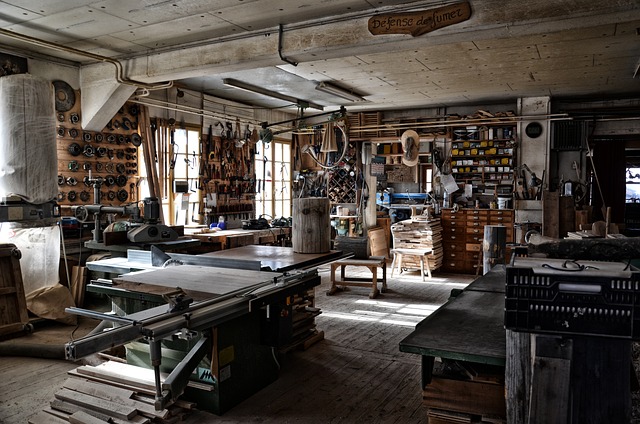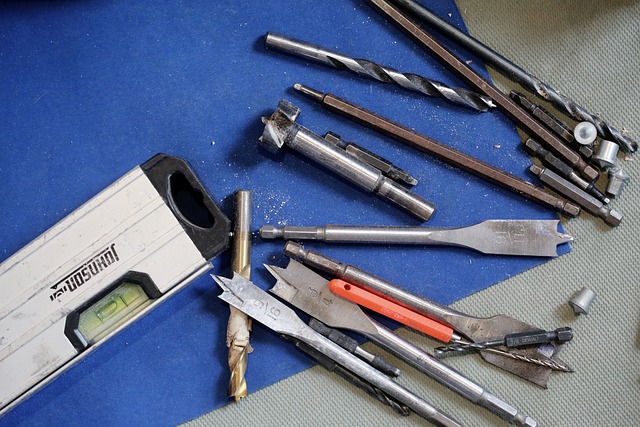A skilled carpenter's precision in various wood cuts is critical for both structural integrity and aesthetic appeal in their projects. Ripping, mitering, and dadoes are essential cuts that define a project's success, with each serving a unique purpose in the woodworking process. Mastery of different saw types and understanding the characteristics of different wood species are crucial for achieving high-quality finishes. Carpenters must accurately execute these cuts, considering the unique properties of the wood, to distinguish their work. Aspiring carpenters need to master basic cuts like ripping and crosscutting for any woodworking project, while also learning advanced techniques like dadoes, rabbets, and grooves. Techniques such as the rip cut, which allows for efficient processing of lumber into precise dimensions, are fundamental for subsequent joinery tasks. Crosscutting demands precision in angles, achievable through tools like miter saws or table saws with crosscut sleds, fine-toothed saw blades, and safety equipment like push sticks. Regular tool maintenance ensures consistent results. The ability to perform these cuts accurately is what sets apart exceptional carpentry from the ordinary.
Embark on a journey through the intricate world of carpentry, where the precision of cuts, the finesse of shaping, and the strength of assemblies converge to bring woodworking visions to life. This article serves as a comprehensive guide for both novice and seasoned carpenters, delving into the essential techniques that form the foundation of exceptional craftsmanship. From mastering key cuts to exploring the versatility of wood, each section offers practical advice and insights, ensuring your projects stand out for their quality and beauty. Dive into the art of transforming raw lumber into functional and decorative pieces, learning how to select the right tools, apply finishes, and maintain your work to endure the test of time. Join us as we explore the carpenter’s toolbox and the critical role it plays in the pursuit of excellence within this rewarding craft.
- Understanding Wood Cuts and Their Importance in Carpentry
- Key Cuts Every Aspiring Carpenter Should Master
- – Rip Cut Fundamentals for Efficient Wood Processing
- – Crosscut Techniques for Precise Angles and Edges
Understanding Wood Cuts and Their Importance in Carpentry

When a carpenter approaches a woodworking project, the initial step involves meticulously planning and executing wood cuts. These cuts are fundamental to the structure and aesthetic of the final product, whether it’s a bookshelf, a piece of furniture, or a custom cabinet. The precision of each cut directly influences the integrity of the assembly; thus, carpenters must possess a deep understanding of the materials they work with. Different types of saws are employed for various cuts, from ripping lumber to miters and dadoes. Ripping, for instance, is the process of cutting along the edge of a board to resize it, which is crucial for achieving the correct dimensions for a project’s components. Miters are important for creating precise angles, often seen in frame joints where accuracy is key to the item’s stability and design. Dadoes, on the other hand, are long slots cut into a board to accommodate tongue-and-groove joints or to house other pieces, enhancing the fit and functionality of the work.
Understanding the characteristics of different wood species is also integral to a carpenter’s skill set. Each type of wood has its own grain pattern, density, and cutting behavior that can affect the outcome of a project. Hardwoods, softwoods, and engineered woods each present unique challenges and opportunities for design. Carpenters must account for these variables when planning their cuts to ensure the best possible fit and finish. The importance of accurate wood cuts in carpentry cannot be overstated; they form the foundation upon which the craftsmanship and quality of the project are built. A carpenter’s ability to select the right tool, make the correct cut, and adjust for the properties of the wood is what distinguishes a well-crafted piece from an ordinary one.
Key Cuts Every Aspiring Carpenter Should Master

Aspiring carpenters have a multitude of cuts to master, each serving as a building block in their craft. The basic cuts, such as ripping and crosscutting, form the foundation of any woodworking project. Ripping involves cutting along the length of a board to achieve a straight edge, a skill necessary for creating frames or panels. Crosscutting, on the other hand, is the process of cutting across the grain, typically used when making smaller pieces or finishing intricate designs. Understanding the angle and precision required for miter cuts and bevel cuts is also crucial; these are used in joinery to create joints that are both strong and aesthetically pleasing. A carpenter must also become adept at making tenon and mortise cuts, which are essential for creating fitted joints used in furniture making and cabinetry. Mastering these cuts not only enhances the quality of work but also ensures safety and efficiency on the job.
Advancing from basic to more complex cuts, a carpenter should familiarize themselves with dado cuts, rabbets, and grooves. Dado cuts are used to create channels or slots in wood, which can serve as spaces for other pieces to fit into securely. Rabbet cuts create recessed areas, often employed in joinery for creating joints that interlock or hide the edges of panels. Groove cuts, essential for inserting shelves or tongue-and-groove joints, require precision and attention to detail. Each cut demands a specific technique, tool, and understanding of wood behavior under different cutting angles. As carpenters refine their skills with these advanced cuts, they will find their repertoire of projects expanding, allowing them to tackle more sophisticated and rewarding builds.
– Rip Cut Fundamentals for Efficient Wood Processing

A seasoned carpenter understands that a rip cut is a fundamental technique in efficient wood processing. This operation, which involves cutting along the grain of the wood, is crucial for reshaping lumber into desired widths and thicknesses. To execute a rip cut effectively, one must first ensure that the saw blade is set to the correct angle relative to the wooden piece. This alignment with the intended line guarantees a straight cut that follows the board’s edge. The choice of saw—hand saw for manual control or power saw for speed and precision—depends on the carpenter’s preference and the scale of the project. Regardless of the tool, maintaining a steady hand and applying even pressure throughout the cut is essential to avoid splintering or deviations from the desired line. Measuring carefully before cutting, keeping the saw parallel to the fence of the workbench, and allowing the saw to do the cutting by gently guiding it through the wood are key practices that contribute to a clean, precise rip cut. This not only saves time but also materials, as the carpenter can accurately obtain the exact dimensions needed for their project without waste.
The precision of a rip cut lays the foundation for subsequent joinery and assembly tasks. A carpenter proficient in this technique can efficiently process wood into usable components that fit together with tight joints. The ability to make straight, clean cuts is not just about adhering to dimensions; it’s also about understanding the characteristics of different types of wood. Hardwoods may require a finer tooth saw to prevent clogging and ensure a smooth cut, while softwoods might allow for a faster pace with a coarser tooth saw without compromising quality. Whether working on a small DIY project or a large-scale construction, mastering the rip cut is an indispensable skill for any carpenter aiming to produce high-quality, well-fitting wooden pieces.
– Crosscut Techniques for Precise Angles and Edges

When a carpenter requires precise angles and edges for a project, crosscutting becomes a critical skill to master. The accuracy of a crosscut directly affects the overall quality of the woodwork. To achieve clean and accurate cuts at desired angles, carpenters can employ various techniques and tools. One effective method is the use of a miter saw, which allows for angled cuts up to 45 degrees with precision. When setting up the saw, carpenters should ensure that the blade is correctly calibrated against the miter scale and double-check the bevel adjustment if an angle other than 90 degrees is needed. For cuts that require extreme accuracy, a high-quality saw blade and fine-tooth saw can be used to minimize tear-out and provide a smoother edge. Additionally, using a crosscut sled attached to a table saw can offer precision for long lengths of wood, as the sled guides the piece through the blade, ensuring straight and true cuts. Carpenters must always secure the workpiece properly, use a fine-toothed blade for a smoother cut, and employ push sticks or featherboards to maintain control and safety during the cut. Regular maintenance of cutting tools, keeping them sharp and well-adjusted, is also crucial for consistent results. By following these crosscut techniques, carpenters can produce clean, precise edges and angles that are essential for high-quality woodworking projects.
In wrapping up our exploration of woodworking, it’s evident that mastering cuts, shapes, and assembly techniques is central to a carpenter’s craft. From the foundational rip cut to the precise crosscut, each skill enhances a carpenter’s ability to transform raw lumber into functional and aesthetically pleasing projects. Aspiring artisans would do well to practice these essential cuts diligently, as they form the bedrock of successful woodworking endeavors. With a solid grasp of these techniques, carpenters can confidently tackle any project that comes their way, ensuring both efficiency and excellence in their craftsmanship.
